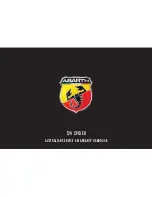
Driving Characteristics
and Towing Tips
{
CAUTION
The driver can lose control when
pulling a trailer if the correct
equipment is not used or the
vehicle is not driven properly.
For example, if the trailer is too
heavy, the brakes may not work
well — or even at all. The driver
and passengers could be seriously
injured. The vehicle may also be
damaged; the resulting repairs
would not be covered by the
vehicle warranty. Pull a trailer only
if all the steps in this section have
been followed. Ask your dealer/
retailer for advice and information
about towing a trailer with the
vehicle.
The vehicle can tow a trailer if it is
equipped with the proper trailer
towing equipment. To identify the
trailering capacity of the vehicle, see
Trailer Towing on page 8-48.
Trailering is different than just driving
the vehicle by itself. Trailering means
changes in handling, acceleration,
braking, durability and fuel economy.
Successful, safe trailering takes
correct equipment, and it has to be
used properly.
The following information has many
time-tested, important trailering tips
and safety rules. Many of these are
important for your safety and that of
your passengers. So please read this
section carefully before pulling a
trailer.
Load-pulling components such as
the engine, transmission, wheel
assemblies and tires are forced to
work harder against the drag of
the added weight. The engine
is required to operate at relatively
higher speeds and under greater
loads, generating extra heat.
Also, the trailer adds considerably
to wind resistance, increasing
the pulling requirements.
Pulling A Trailer
Here are some important points:
•
There are many different laws,
including speed limit restrictions,
having to do with trailering. Make
sure the rig will be legal, not only
where you live but also where you
will be driving. A good source for
this information can be state or
provincial police.
•
Do not tow a trailer at all during
the first 1 600 km (1,000 miles)
the new vehicle is driven.
The engine, axle or other
parts could be damaged.
•
Then, during the first 800 km
(500 miles) that a trailer is towed,
do not drive over 80 km/h
(50 mph) and do not make starts
at full throttle. This helps the
engine and other parts of the
vehicle wear in at the heavier
loads.
8-44
Driving and Operating
Summary of Contents for 2010 Vibe
Page 6: ... NOTES vi Introduction ...
Page 20: ... NOTES 1 14 Keys Doors and Windows ...
Page 82: ... NOTES 3 6 Storage ...
Page 84: ...Instrument Panel Overview 4 2 Instruments and Controls ...
Page 108: ... NOTES 4 26 Instruments and Controls ...
Page 114: ... NOTES 5 6 Lighting ...
Page 134: ... NOTES 7 6 Climate Controls ...
Page 192: ...When you open the hood on the 2 4L L4 engine this is what you see 9 8 Vehicle Care ...
Page 268: ... NOTES 9 84 Vehicle Care ...
















































